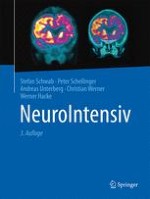2015 | OriginalPaper | Buchkapitel
8. Kardiovaskuläres Management
verfasst von : Sascha Treskatsch, Dr., Matthias Carl, Dr., Prof. Dr. Claudia Spies
Erschienen in: NeuroIntensiv
Verlag: Springer Berlin Heidelberg
2015 | OriginalPaper | Buchkapitel
verfasst von : Sascha Treskatsch, Dr., Matthias Carl, Dr., Prof. Dr. Claudia Spies
Erschienen in: NeuroIntensiv
Verlag: Springer Berlin Heidelberg
Print ISBN: 978-3-662-46499-1
Electronic ISBN: 978-3-662-46500-4
Copyright-Jahr: 2015
